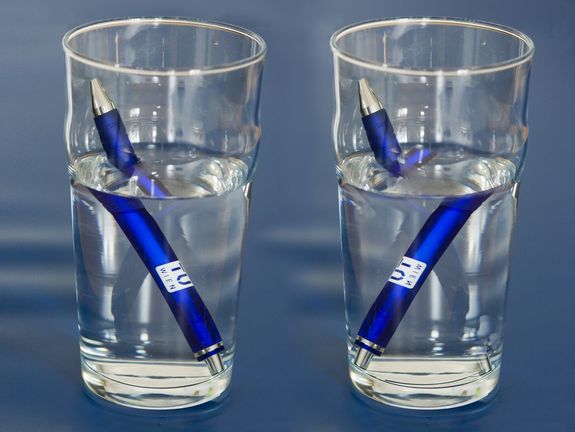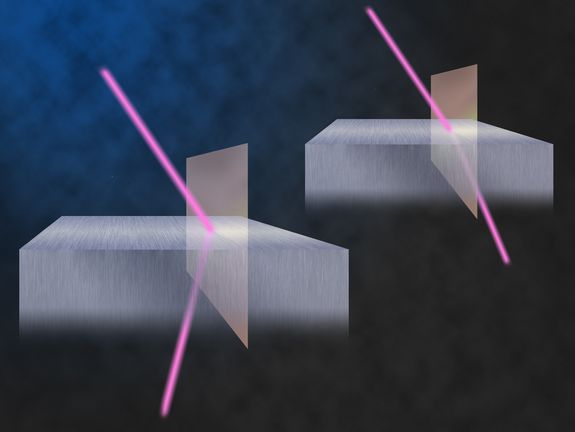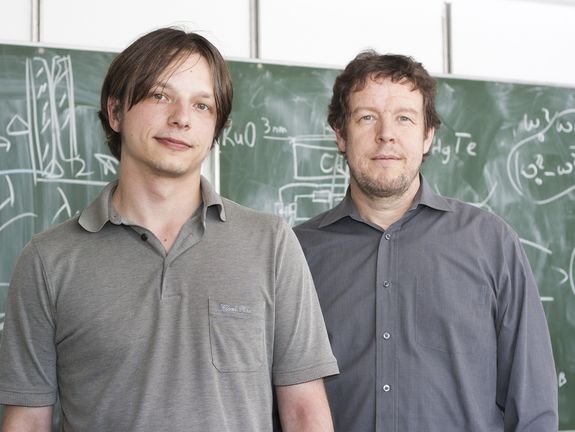The effect can be seen just by poking a stick into the water; at the water surface, the light changes its direction, the stick appears to be bent. This tilt is described by the refractive index. For years, scientists have been trying to create special materials with a negative refractive index – their optical properties are quite different from those of normal materials. Researchers at the TU Vienna could now show that even common metals can have a negative refractive index, if they are placed in a magnetic field.
Different Kind of Diffraction for Better Optics
When we drive a car into the snow at the edge of the road, the wheels on the road may turn faster than the wheels on the snow. This changes the direction of the car and it starts skidding. Something quite similar happens to beams of light that travel through the interface between two materials, in which light travels at different speeds – such as air and glass. "The refractive index measures, how strongly the light is deflected", explains Andrei Pimenov, Professor at the Institute for Solid State Physics at the TU Vienna. For years there have been speculations about the properties of possible materials with a negative refractive index. Entering such a material, light would bend in the opposite direction. Scientists believe that this could lead to completely new optical effects and technologies.
Metal Bends Light
It was believed that these effects can only be achieved using so called "meta-materials". Such materials are constructed from small intricate structures, which diffract the light in special ways on a microscopic level. At the TU Vienna, scientists found out that with simple tricks even quite common metals such as cobalt or iron can exhibit a negative refractive index. "We place the metal in a strong magnetic field and irradiate it with light of precisely the correct wavelength", Andrei Pimenov explains. He uses microwave radiation, which can penetrate thin foils of metal. Due to magnetic resonance effects in the metal, the light is bent drastically at the surface. Within the metal, it turns into the other direction, as if there was a mirror inside the metal.
The Perfect Lens
Recently, materials with a negative diffractive index have attracted a great deal of attention, because their peculiar behavior could allow for completely new kinds of optical lenses. The resolution of regular lenses is limited by the wave length of light. With long radar waves, it is impossible to take a picture of a butterfly, with visible light, nobody can depict an atom. "But using a material with a negative refractive index, one could theoretically get infinitely high resolution", says Andrei Pimenov. Being able to use simple metals instead of complicated meta-materials makes things a lot easier. However, before optical lenses with a negative refractive index can be built, scientists have to find ways to compensate for the absorption of the light in the material.
Picture Download: <link http: www.tuwien.ac.at dle pr aktuelles downloads licht>www.tuwien.ac.at/dle/pr/aktuelles/downloads/2011/licht/
Original Publication: Engelbrecht et al., EPL 96, 3 (2011). <link http: epljournal.edpsciences.org>epljournal.edpsciences.org/index.php
Further Information:
Prof. Andrei Pimenov
Institut für Festkörperphysik
Technische Universität Wien
Wiedner Hauptstraße 8-10, 1040 Wien
T: +43-1-58801-137 23
andrei.pimenov(at)tuwien.ac.at


